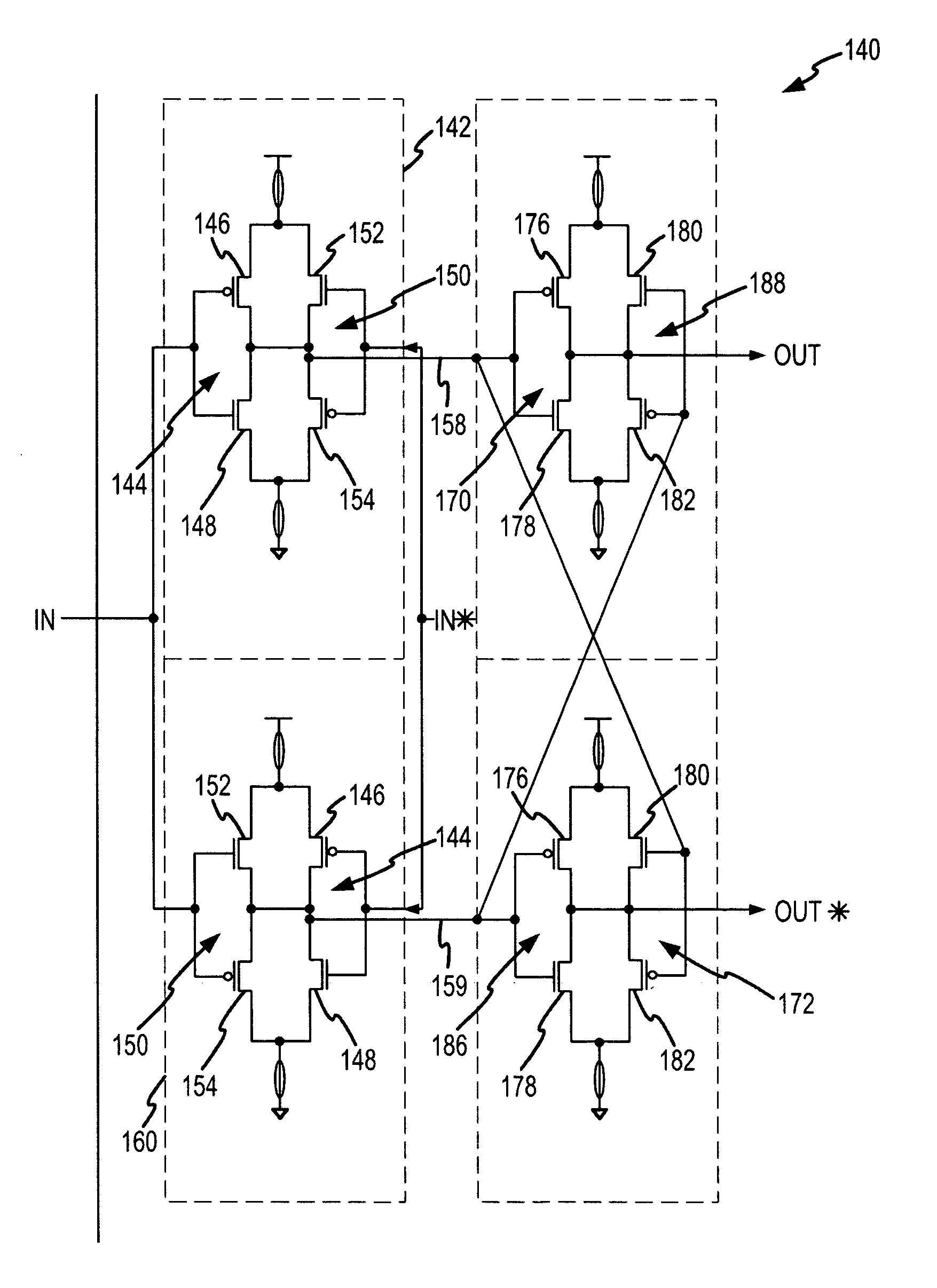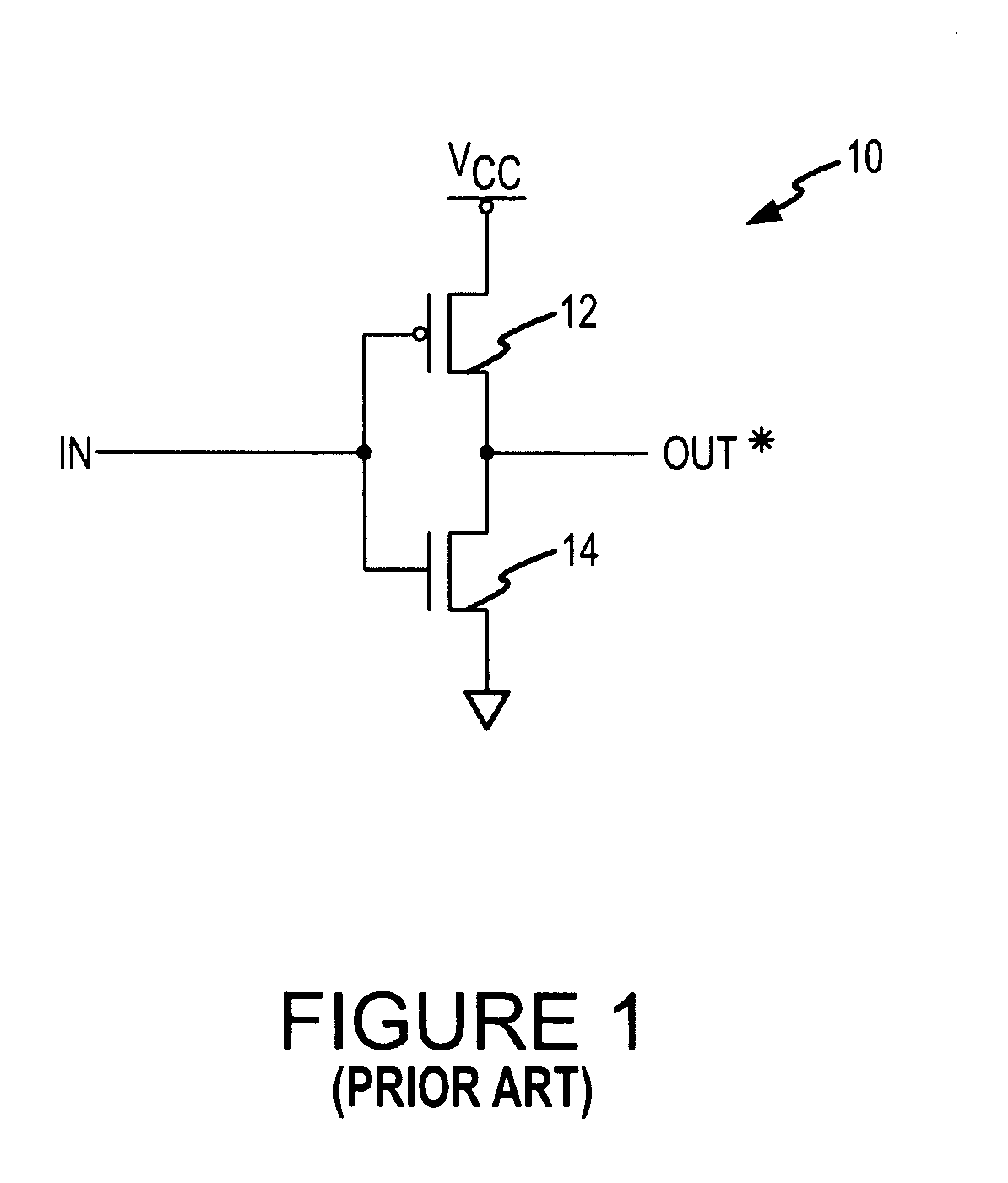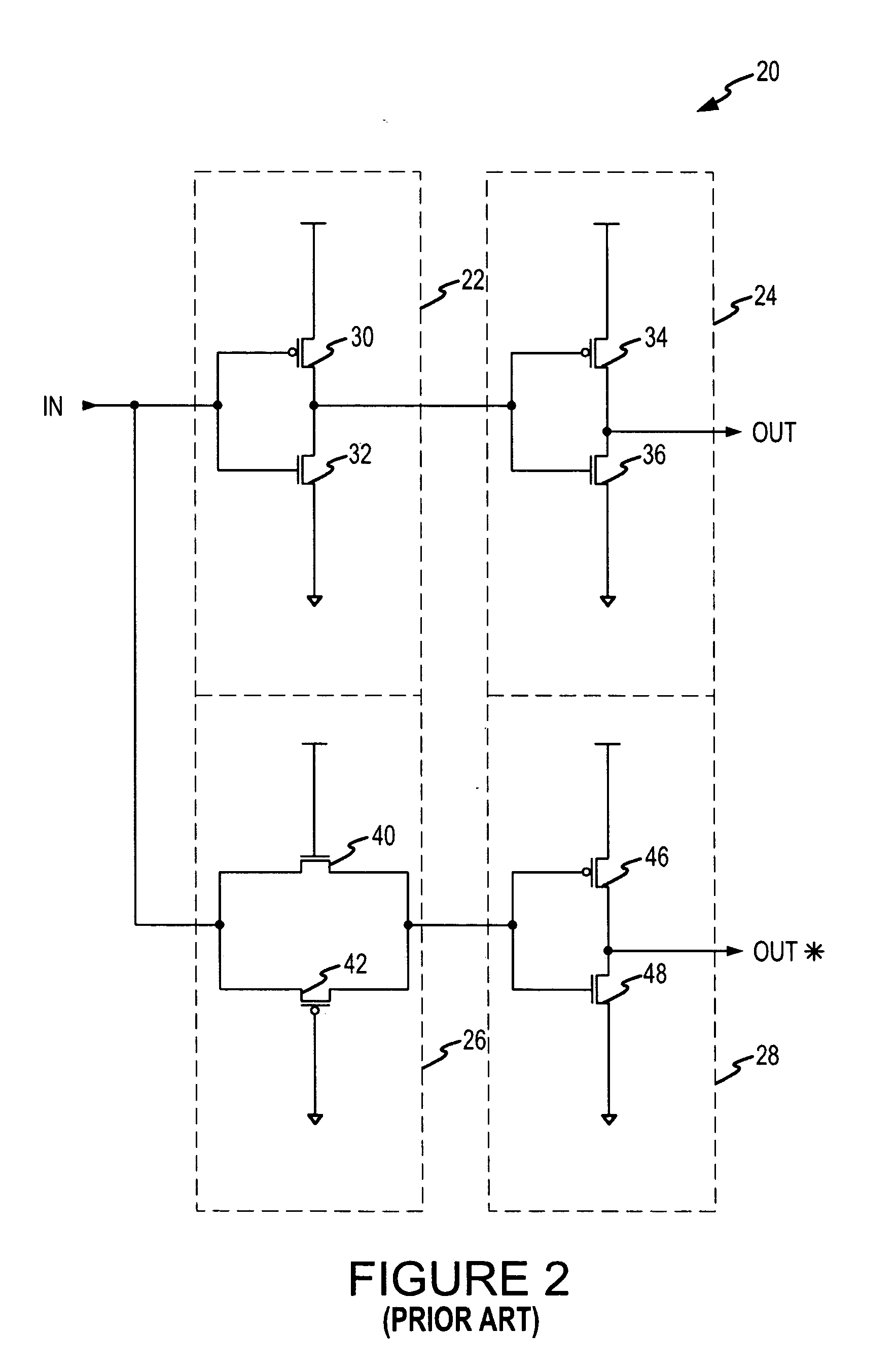Method and circuit for producing symmetrical output signals tolerant to input timing skew, output delay/slewrate-mismatch, and complementary device mismatch
a technology of output signal and output delay, applied in logic circuits, logic circuit coupling/interface arrangements, pulse techniques, etc., can solve problems such as difficulty in making the switching characteristics of rising edge and falling edge of inverter equal to each other in the face of process, and the effect of supply voltage and temperature variations
- Summary
- Abstract
- Description
- Claims
- Application Information
AI Technical Summary
Problems solved by technology
Method used
Image
Examples
Embodiment Construction
[0027]A circuit 140 for transmitting complementary signals according to one example of the invention is shown in FIG. 6. The circuit 140 includes a first circuit 142 having an inverter 144 formed by a PMOS transistor 146 in series with an NMOS transistor 148 that receive an input signal IN at their gates. The first circuit 142 also includes a buffer 150 formed by an NMOS transistor 152 coupled in series with a PMOS transistor 154. The buffer 150 receives the complement of the IN signal, i.e., IN*. An output terminal 158 of the first circuit 142 is connected to both an output of the inverter 144 and an output of the buffer 150.
[0028]In operation, the inverter 144 drives the output terminal 158 in the opposite direction from the IN signal. On the other hand, the buffer 150 drives the output terminal in the same direction as the IN* signal. However, since the IN* signal is the complement of the IN signal, both the inverter 144 and the buffer 150 drive the output terminal 158 in the opp...
PUM
 Login to View More
Login to View More Abstract
Description
Claims
Application Information
 Login to View More
Login to View More - R&D
- Intellectual Property
- Life Sciences
- Materials
- Tech Scout
- Unparalleled Data Quality
- Higher Quality Content
- 60% Fewer Hallucinations
Browse by: Latest US Patents, China's latest patents, Technical Efficacy Thesaurus, Application Domain, Technology Topic, Popular Technical Reports.
© 2025 PatSnap. All rights reserved.Legal|Privacy policy|Modern Slavery Act Transparency Statement|Sitemap|About US| Contact US: help@patsnap.com



